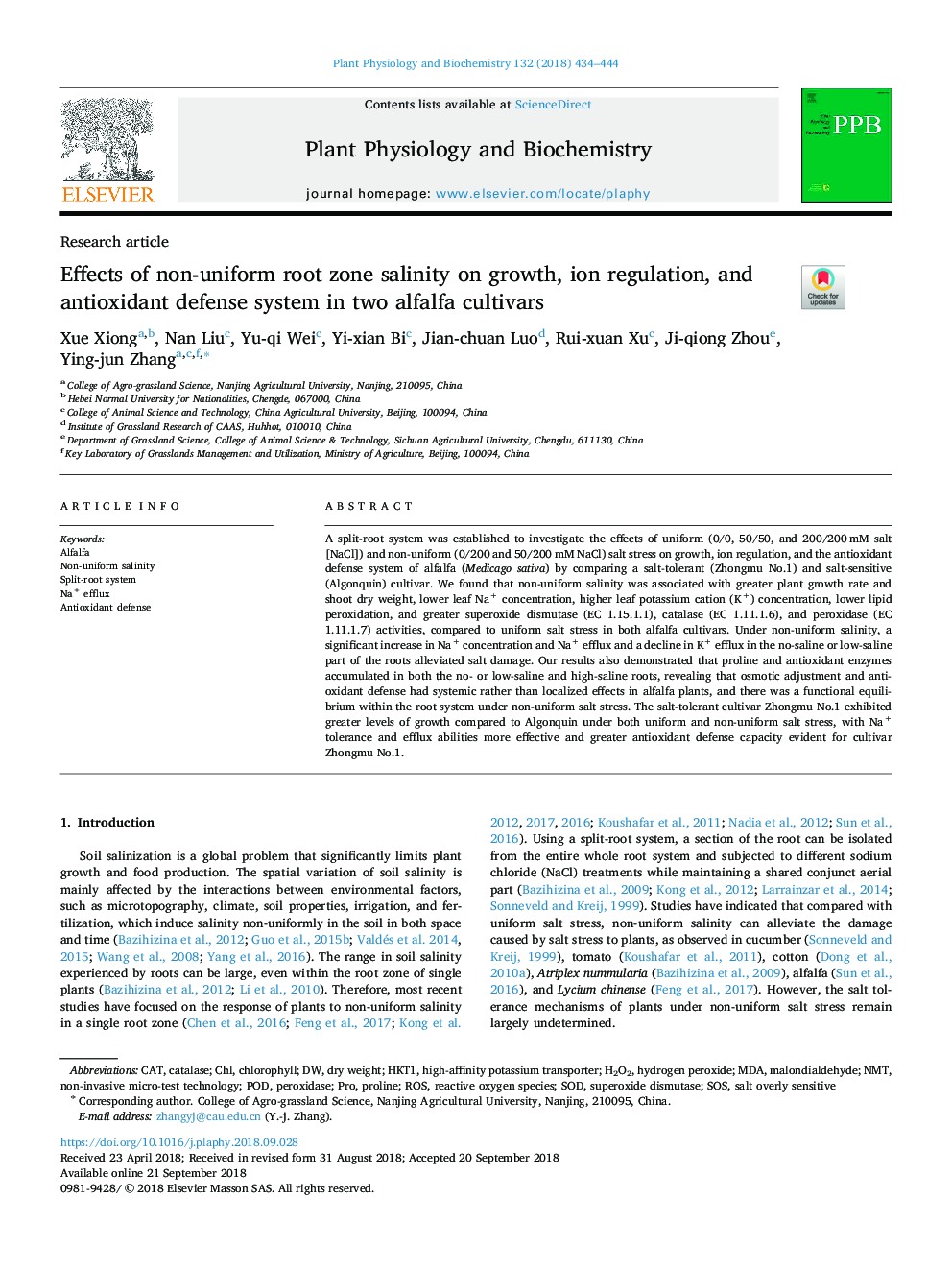| Article ID | Journal | Published Year | Pages | File Type |
|---|---|---|---|---|
| 11030890 | Plant Physiology and Biochemistry | 2018 | 11 Pages |
Abstract
A split-root system was established to investigate the effects of uniform (0/0, 50/50, and 200/200â¯mM salt [NaCl]) and non-uniform (0/200 and 50/200â¯mM NaCl) salt stress on growth, ion regulation, and the antioxidant defense system of alfalfa (Medicago sativa) by comparing a salt-tolerant (Zhongmu No.1) and salt-sensitive (Algonquin) cultivar. We found that non-uniform salinity was associated with greater plant growth rate and shoot dry weight, lower leaf Na+ concentration, higher leaf potassium cation (K+) concentration, lower lipid peroxidation, and greater superoxide dismutase (EC 1.15.1.1), catalase (EC 1.11.1.6), and peroxidase (EC 1.11.1.7) activities, compared to uniform salt stress in both alfalfa cultivars. Under non-uniform salinity, a significant increase in Na+ concentration and Na+ efflux and a decline in K+ efflux in the no-saline or low-saline part of the roots alleviated salt damage. Our results also demonstrated that proline and antioxidant enzymes accumulated in both the no- or low-saline and high-saline roots, revealing that osmotic adjustment and antioxidant defense had systemic rather than localized effects in alfalfa plants, and there was a functional equilibrium within the root system under non-uniform salt stress. The salt-tolerant cultivar Zhongmu No.1 exhibited greater levels of growth compared to Algonquin under both uniform and non-uniform salt stress, with Na+ tolerance and efflux abilities more effective and greater antioxidant defense capacity evident for cultivar Zhongmu No.1.
Keywords
Related Topics
Life Sciences
Agricultural and Biological Sciences
Plant Science
Authors
Xue Xiong, Nan Liu, Yu-qi Wei, Yi-xian Bi, Jian-chuan Luo, Rui-xuan Xu, Ji-qiong Zhou, Ying-jun Zhang,
